The endurance road bike has been the forgotten design for some years now.
With aero road bikes lighter than ever and pure race bikes getting more compliance, not to mention some gravel bikes being somewhat road-capable, endurance bikes have been overlooked by many riders.
I think that’s a big mistake, though, and here’s my manifesto as to why.
The heart of my argument is that the average roadie (like me) has vastly different needs from those of a professional racer.
A WorldTour team replica bike, with its race-optimised design and geometry, or a super-light hill climb specialist bike might just make your rides worse not better.
Endurance road bike geometry is what most of us need
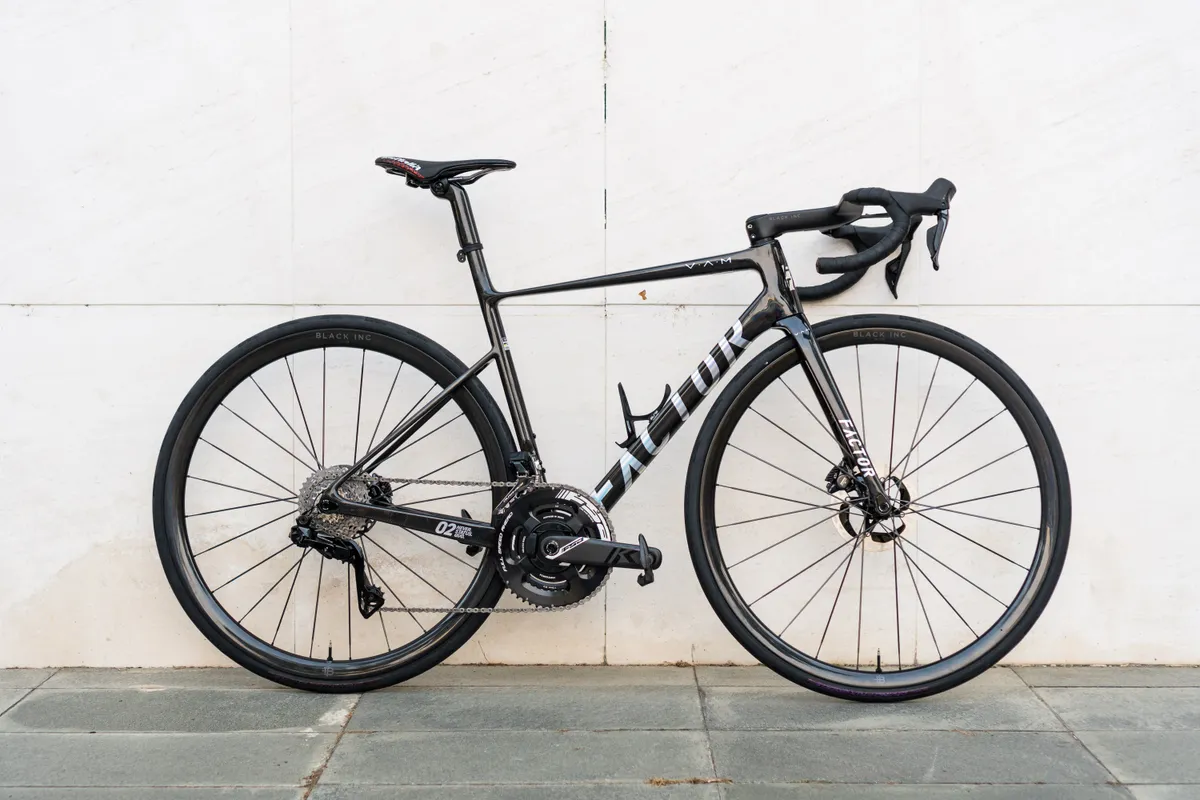
Take a look at an average pro bike, and more often than not you’ll see bikes with a long reach and super-low stack height.
In practice, this means the handlebars sit very low and far away from the saddle, meaning the rider has to bend over and stretch out to reach the bars.
There was a social media trend a few years back dubbed ‘slam that stem’, for example. It was considered cool for ‘serious’ roadies to rid their bikes of headset spacers, cut down the steerer tube on the fork and even resort to negative rise stems to get a ‘pro’ riding position – comfort be damned.
I can only imagine the number of good bikes ruined by that daft trend.
These kinds of stretched-out, aerodynamic riding positions might make sense for professional athletes. They have the strength and flexibility to maintain these extreme postures for days on end, after all.

For the rest of us, though, one of the easiest ways to make yourself faster for longer is to be more comfortable, so I’d always recommend a proper bike fit.
You can buy the ‘fastest’ race bike on paper, but if you can’t get comfortable on it and stay that way on the longest of rides then it’s money wasted. A full-on aero road bike may look fast leaning up outside the coffee stop, but if it makes you wince every time you turn the pedals you won’t be fast while riding.
Endurance road bikes, on the other hand, typically use taller stacks and a shorter reach, putting the bars and controls within easier range.
This can not only help reduce fatigue and lessen the likelihood of discomfort or injury, but can also enable you to make better use of the drops on your handlebar, for improved descending control and aerodynamics.
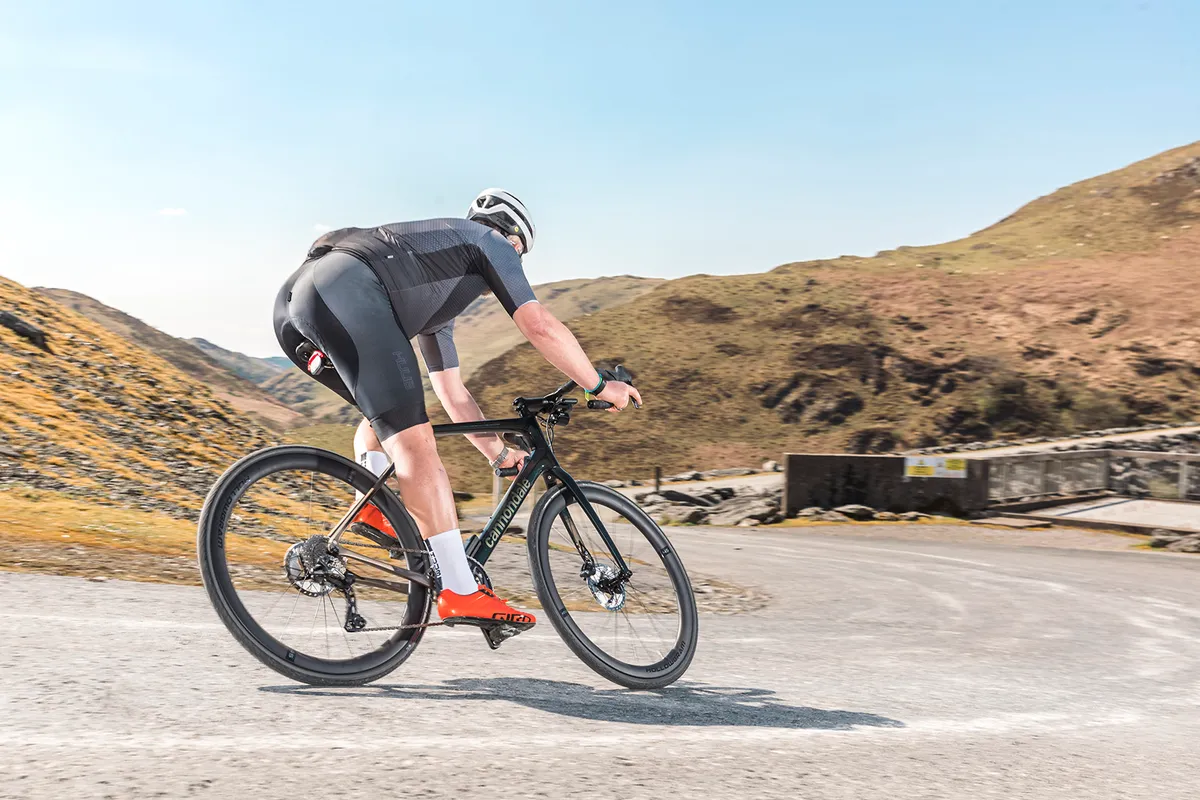
Aside from your ride position, endurance bikes have handling geometries designed to meet the needs of non-pro riders too.
The most obvious change is often an elongated wheelbase (the distance between the centre of each wheel on the bike), because endurance bikes tend to have larger tyre clearances.
A longer wheelbase makes a bike feel more stable and less twitchy, which is especially useful for confident riding at high speeds, such as when descending.
Whilst previous endurance road bikes tended to slacken the head angle to slow down the steering, the latest generation of modern endurance bikes keeps to the race bike standard of 72.5 to 73.5 degrees, with some even having similarly racy trail figures too.
Trail shows the front tyre's contact point ‘trailing’ behind the steering axis. A small measure of trail makes for a fast-handling bike; more trail slows down the steering response.
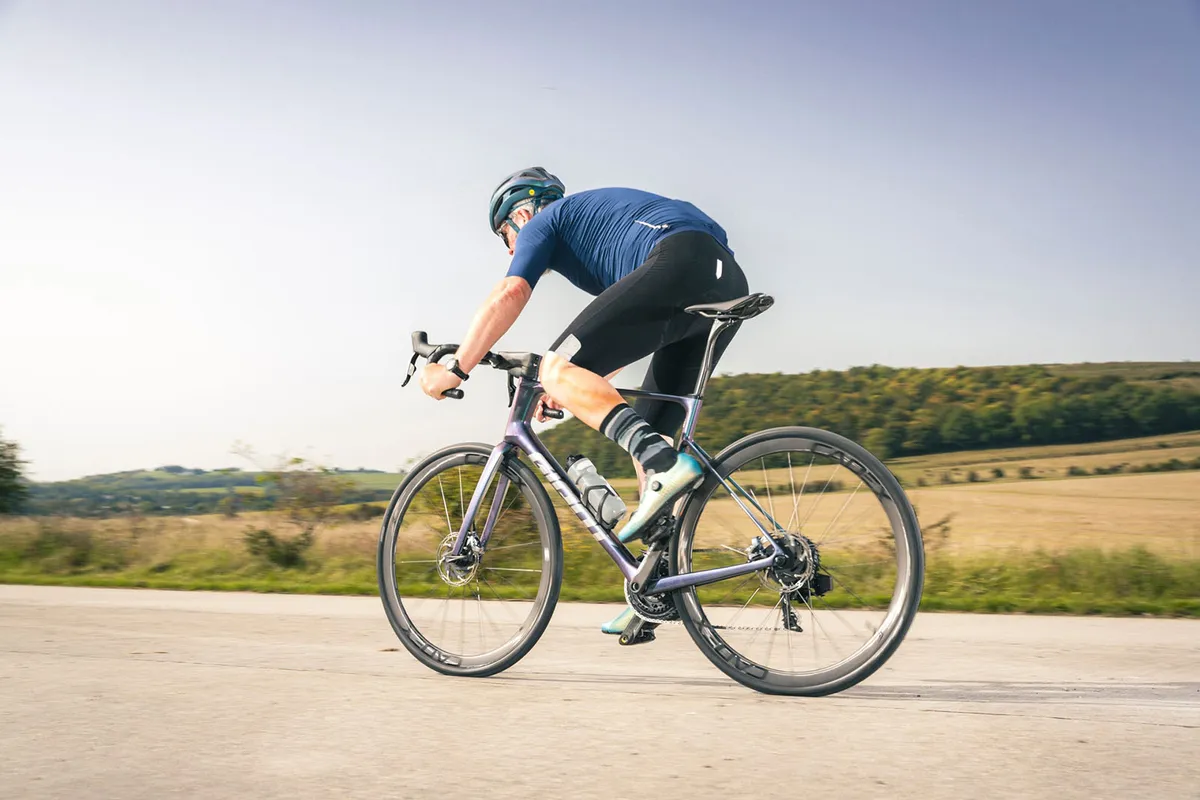
In fact, one of the very best new endurance bikes, the Giant Defy, has a trail of 58.4mm in a size L – that's as near to ‘race bike’ trail as you’ll find.
My own Cannondale SuperSix Evo (the previous-generation, 2021 model) – one of the prototypical road racing bikes of recent years – has a trail of 58mm, for example.
Even the most Goldilocks of bike riders would be hard-pushed to sense a difference between it and the Defy, when it comes to steering responsiveness.
The increase in tyre size and more fork rake makes for a bike that tracks better on poorer surfaces, though, so a combination of quick steering and stability – especially when the roads are less than perfect – is exactly what I want from a bike.
Why wider tyres are a good thing
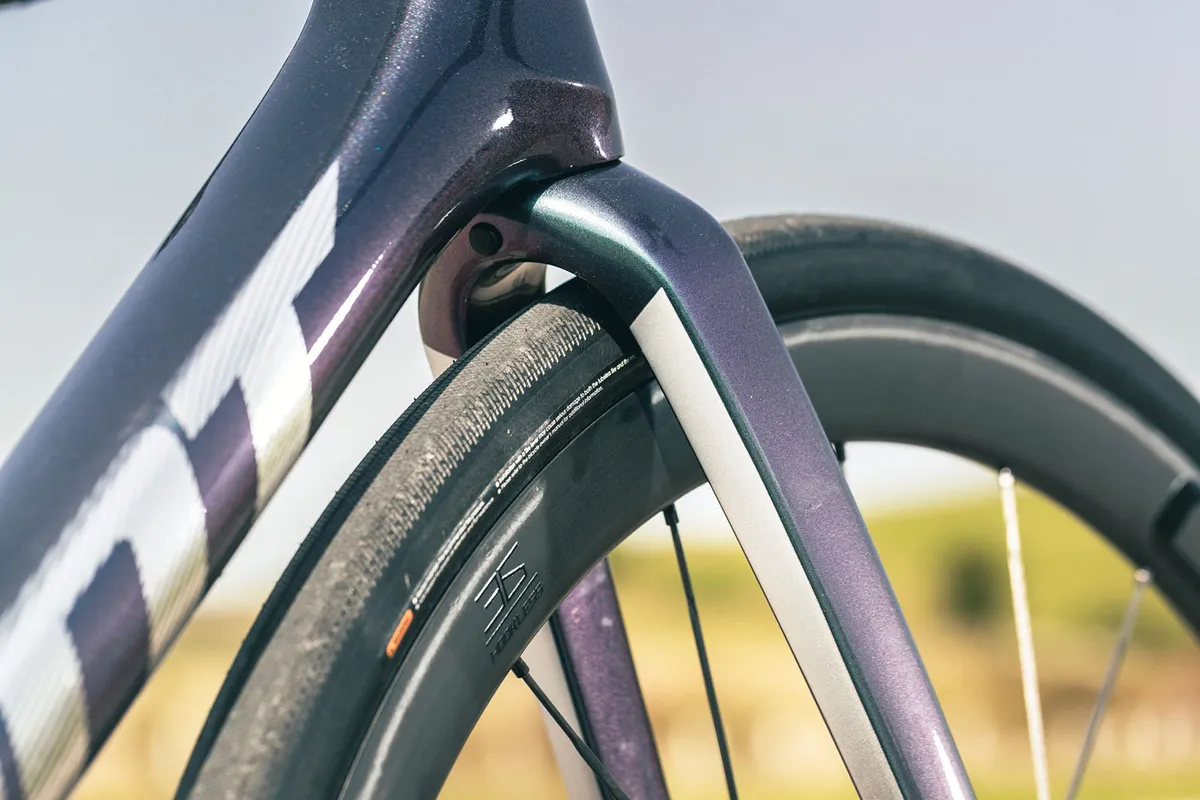
Wide tyres used to be the confines of the clubman's winter trainer, touring bikes or hardy commuter bikes.
Now, though, 28c tyres are the norm on pro bikes, with anything smaller being an exception.
Larger tyres are found frequently too, especially in the spring classics.
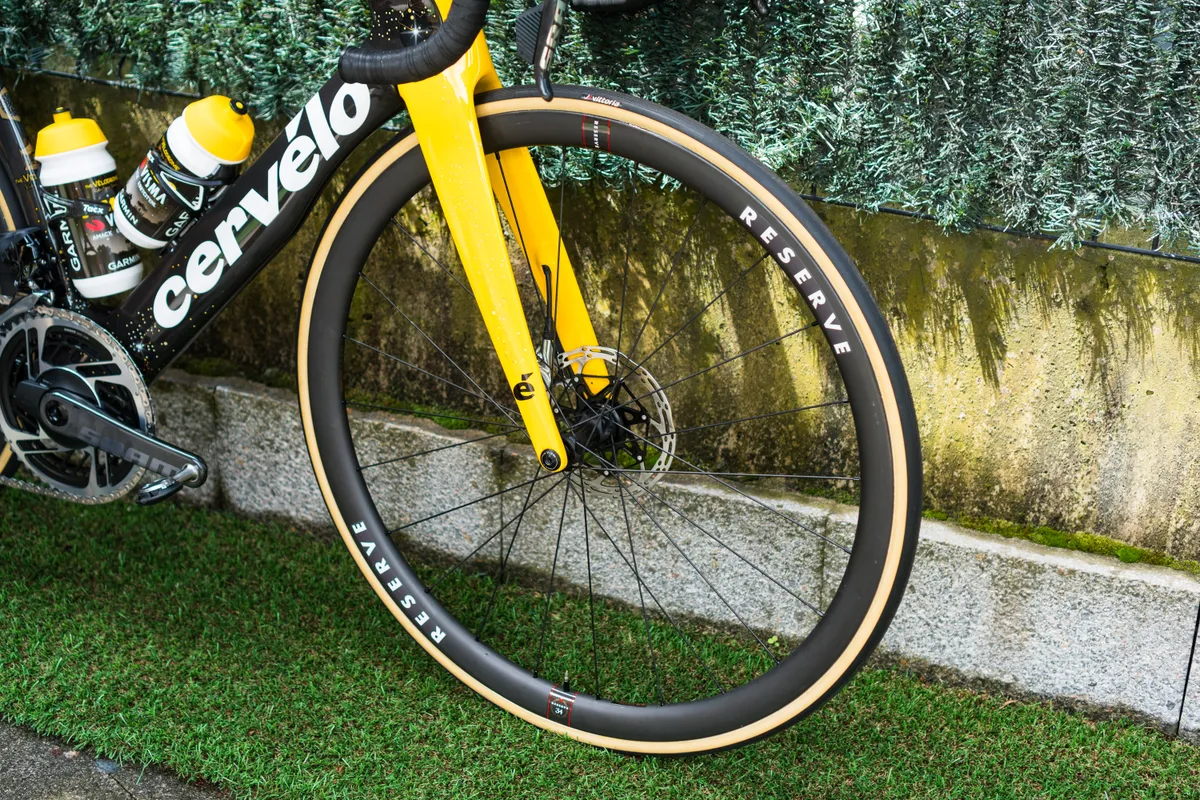
My partner’s family in Northern Italy rejoice when the Giro comes through the village, because they know that’s when the local region will clean or re-tarmac the roads.
Does anyone ever clean or resurface the roads to Grand Tour-worthy condition in your local area? They don’t in mine.
While many modern race bikes are getting clearance for wider tyres, such as 32mm on the latest Giant TCR or Specialized Tarmac, the latest endurance road bikes can typically still take much bigger rubber.
The latest Giant Defy and Trek Domane, for example, both have clearance for 38mm-wide tyres, while the Vitus Venon Evo (our 2023 Bike of the Year) can clear 40mm-wide tyres with a 2x crankset, or 45mm-wide tyres with a 1x drivetrain.
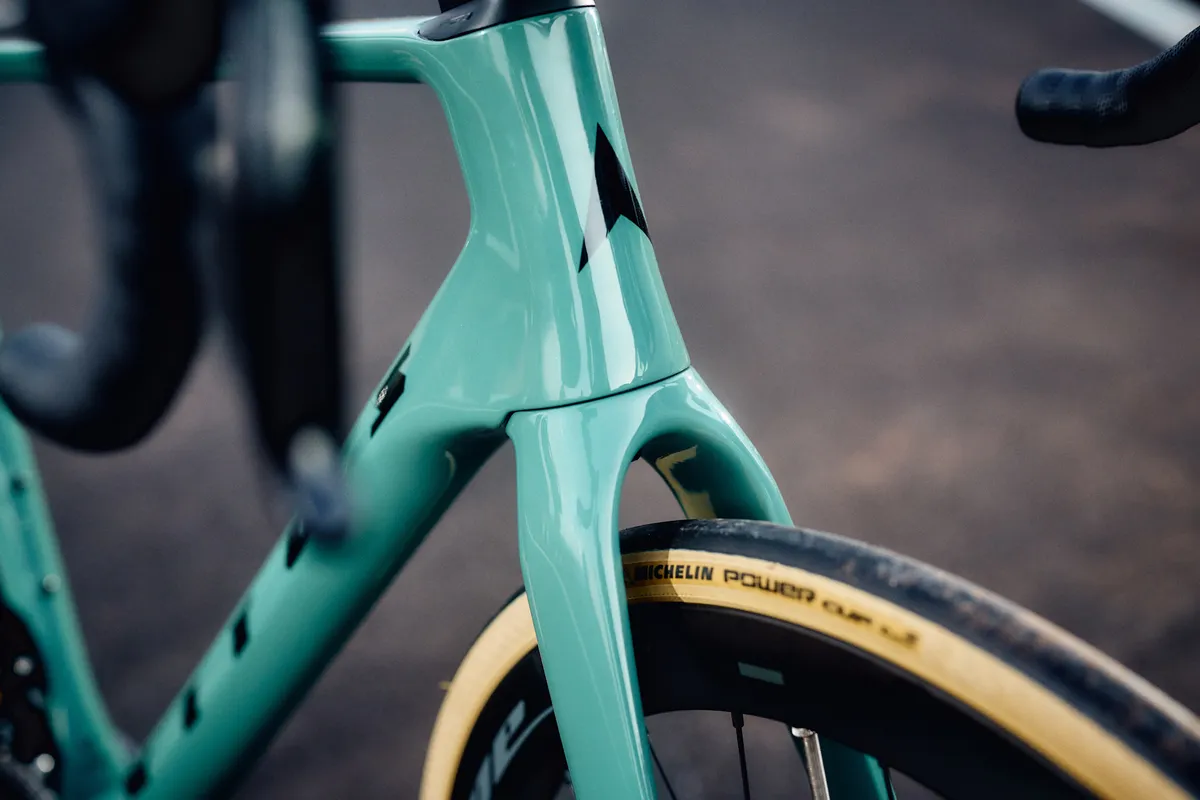
There’s no need to max out the clearance on these bikes if you don’t want or need to, of course. But for those of us who have to ride on poorly maintained roads most of the time, the speed, grip and comfort benefits of using wider tyres at lower pressures are clear-cut.
On the subject of tyre clearance, it’s true that most gravel bikes have even wider tyre clearances still. However, while they are ‘road capable’ (as in you can run a gravel bike on the road to get to the trail head), their slower handling and heavy, knobbly gravel tyres inevitably give up a lot of speed on the road compared to endurance bikes, in my experience.
Spin to win

Compact gearing first appeared around 2003 (that's before BikeRadar existed, but I remember the furore in the letters pages of our sister title Cycling Plus) when Shimano first made its 50/34-tooth ‘compact’ crankset available.
The industry then doubled down on easier gearing in the early 2010s, bringing us 11-32 and 11-34t cassettes (off the back of Alberto Contador using an 11-32t in that year’s Giro d’Italia).
There was rumbling from old-school roadies that somehow this was cheating, because it made road cycling ‘too easy’. We even had some in the office who would only countenance 53/39t ‘standard’ cranksets and tight, 11-25t (or smaller) cassettes.
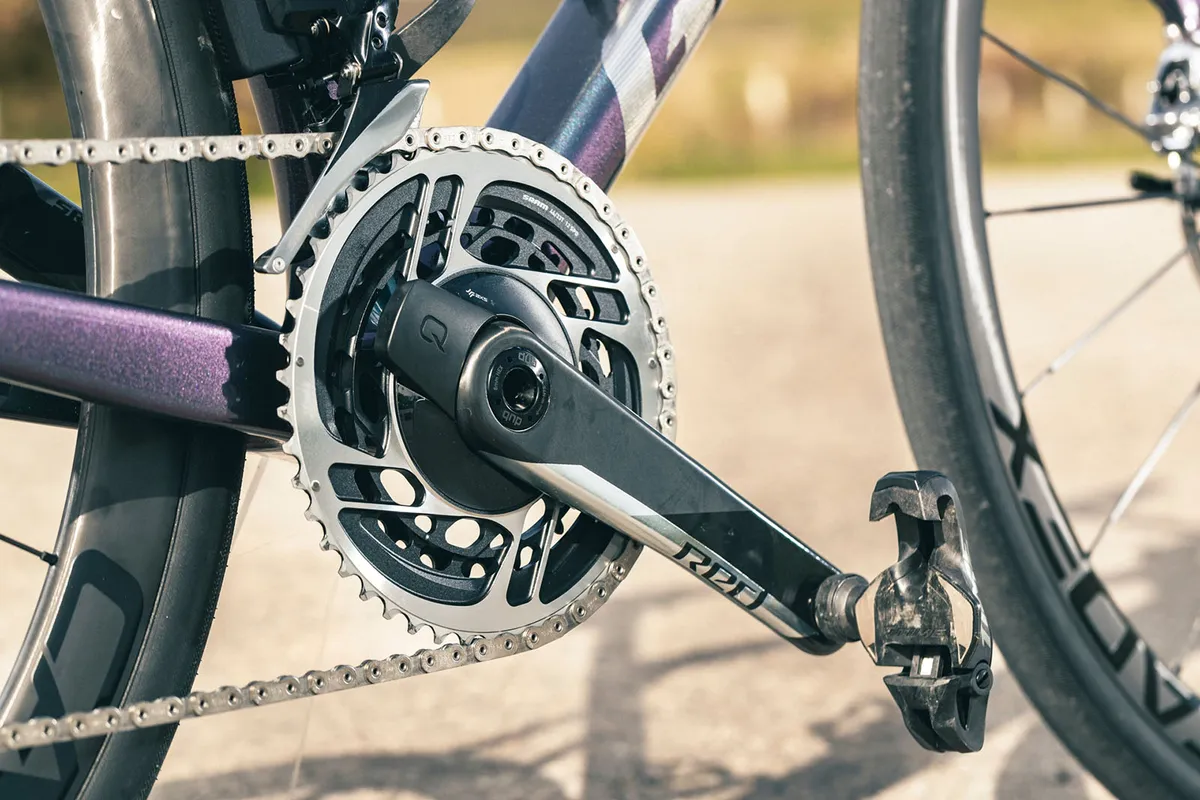
While many road bikes are still specced with ‘race’ gearing, such as 52/36t ‘sub-compact’ chainrings and tight (by today’s standards) 11-30t cassettes, endurance road bikes typically come with a much more useful spread of gears.
The 2024 Giant Defy Advanced SL 0, for example, is specced with SRAM’s Red eTap AXS drivetrain, with 46/33t chainrings and a wide-ranging 10-36t cassette.
At the top end, that gives you a marginally bigger gear than a 50x11t, while you get an easiest gear low enough to scale almost any berg.
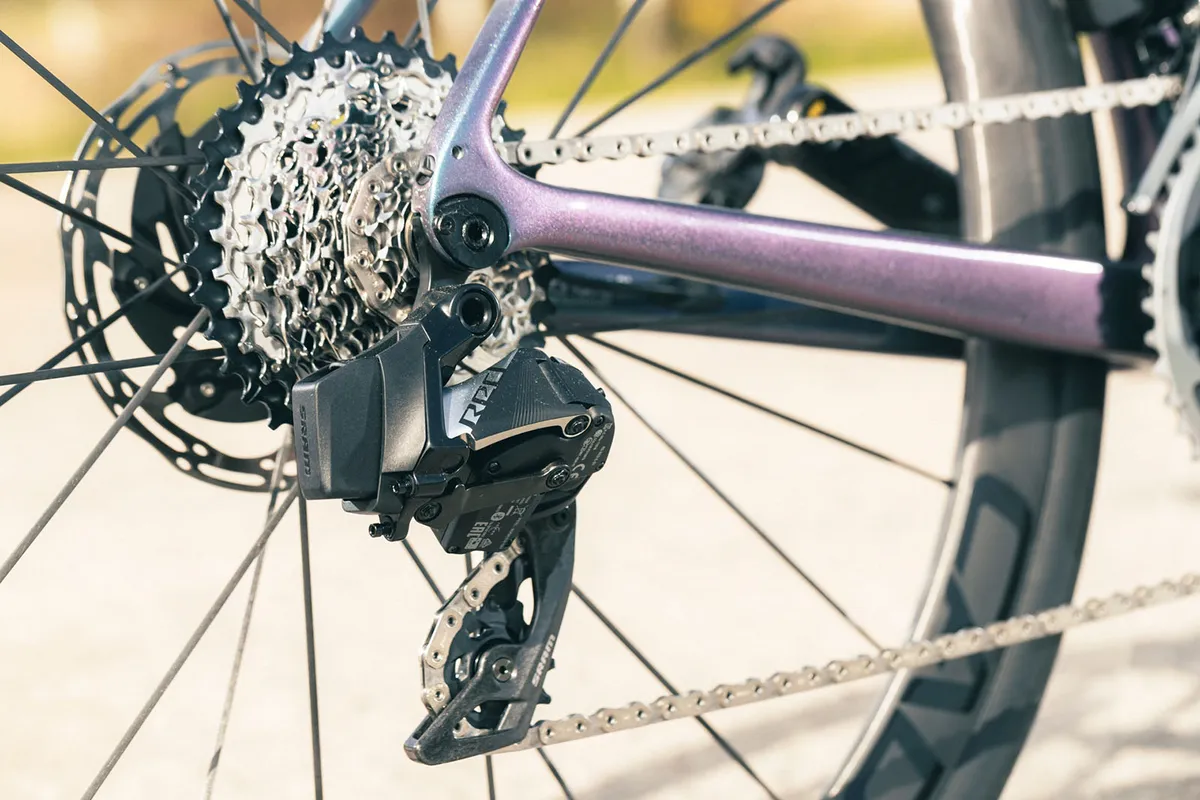
Ultimately, by using a groupset with smaller ratios, I have a gear spread that's more compatible with me.
Yes, a pro or elite racer may be able to spin a 53/11t gear at 45kph, but I can’t and I’d wager most of our audience can’t either.
Is it worthwhile carrying such big gears around when you’ll rarely use them, and having smaller chainrings and bigger cassette cogs can help you climb faster? I think not.
N=1

While pure road racing or gravel bikes tend to be great at the one thing they’re designed to do best, endurance road bikes are becoming increasingly versatile in comparison.
The Vitus Venon Evo and Ridley Grifn, for example, can be built up in both road and gravel trim, while Merida’s Scultura Endurance can also be had in a gravel-spec variant.
With these bikes, you can add a set of gravel tyres, or even a second set of wheels, and you’ve potentially got a one-bike-for-all solution, or an N=1 bike rather than the usual N 1.
Yet on the days when you want to stick to the road, endurance road bikes aren’t such a compromise in a race, fast sportive or competitive club run.

Cervélo’s Caledonia, for example, is essentially an R-series Cervélo road bike with a slightly relaxed ride position and generous tyre clearances.
The fabulous new Giant Defy Advanced SL (the bike that's making me contemplate giving up my much loved Giant TCR Advanced SL), with its total weight of 7.52kg (in a size large) is as light as most pro-level race bikes – including its bottle cages, GPS mount and 32c tyres.
The modern endurance road bike is practical and exciting

The biggest benefit of the endurance road bike has also perhaps led to it falling out of favour.
A bike that's road race and (light) gravel capable, along with being more comfortable to ride, has the potential to be a quiver killer – a one-bike-for-all solution, which looks great on paper and is the choice to make with your head rather than your heart.
But let's be honest, who's buying a bike solely with their head?
Despite penning this love song to the endurance road bike, I only have a couple of them (a Cannondale Synapse and a Lynskey titanium road bike) in my garage. I’m something of a bike hoarder, as some of you may know, but I have far more ‘race’ bikes (a Specialized Tarmac, a Parlee, a Cannondale SuperSix Evo, a Giant TCR, a Storck, etc).
So I understand my own hypocrisy and I’m trying to deal with it.
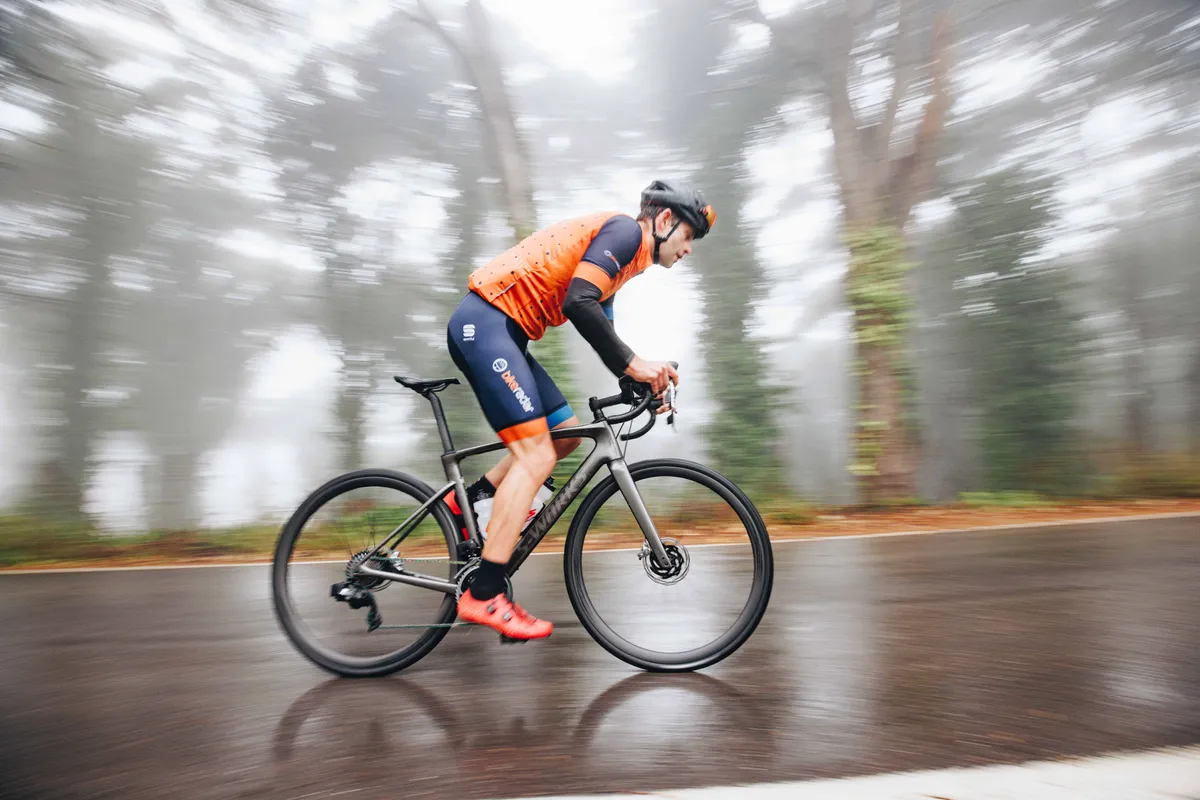
The latest generation of endurance bikes, however, offer the opportunity to buy with your head and your heart.
There are some stunning-looking new models around, with the promise of more to come next year.
I’m currently lusting after a new Giant Defy, I enjoyed testing the new Specialized Roubaix SL8 and I’m champing at the bit to get stuck into the endurance bikes in our next Bike of the Year.
The endurance road bike category is the most diverse and I’d argue the most exciting right now, and long may that continue.
